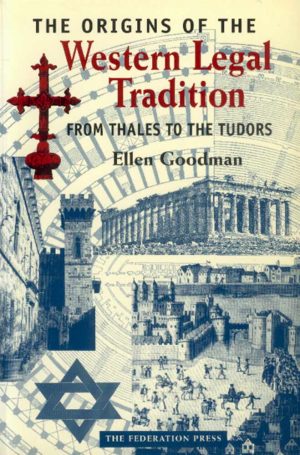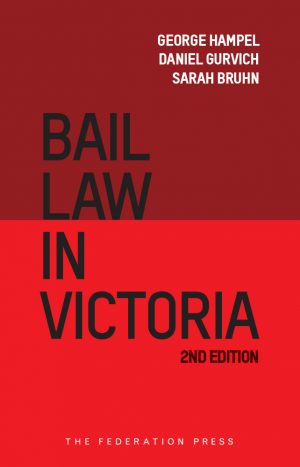The rule of law constitutes the hallmark of contemporary Western society. However, public perceptions and attitudes to the law can vary in space and time. This book explores legal solutions to selected problem scenarios in their broader historical, economic, political and societal context. The focus is on the legal traditions of civil law and common law.
The book is premised on the assumption – indeed, the conviction – that use of the comparative method both facilitates and promotes a deeper understanding of the society in which we live and the rules by which it is shaped. Major ‘threads’ that run through the book are the relationship between law and morality, the role of the state in regulating human interaction, as well as the relationship between the state and the individual.
As a practical matter, the text is divided into 3 Parts. A first Part provides various building blocks for a discussion of ‘the law in action’ in the second and main Part of the book. A final Part addresses the issue of regional globalisation and its impact on the traditional divide between civil law and common law. An Appendix contains the full text of the Charter of Fundamental Rights of the European Union.
Preface
Abbreviations
Part A: Building Blocks
1. System Building in Law
Introductory Observations
Structure of this Book
Comparativism and the Legacy of Kahn-Freund
System Building: Pioneering Role of Zweigert and Kötz and David and Brierley
Further Reading
2. Codes and Codification in the Civil Law
Formal and Substantive Codes Distinguished
Substantive Codes: Features
Life Beyond the Code
Further Reading
3. Judges and Precedent in the Common law
Contrast with the Civil Law
Blame the French?
Precedent
Further Reading
Part B: Law in Action
4. The Blame Game: Who Should Bear the Cost of Accidents?
Basic Terminology
How to Prove Fault?
Judicial Move Away from Fault in France
Role of the Legislature in the Common Law
In Conclusion
Further Reading
5. Duty to Rescue: To Act or Not to Act? (That’s the – Legal – Question!)
Beyond the Blame Game?
Position at Common Law
Position at Civil Law
Rejoinder: Role of the Legislature in the Common Law
Further Reading
6. Law and Morality: Where is the Harm?
Harm: The Broader Context
Harm: The (Legal) Concept
Harm: Special Problems
Further Reading
7. Industrial Democracy: In Search of Utopia?
The Broader Context
Approaches to Employee Protection
European Forms of Workplace Participation
Further Reading
8. Court Procedure
May the Best Man Win?
The Traditional Adversarial/Inquisitorial Dichotomy
The Damaska Alternative: Models of Authority
May the Best Man Win (After All)?
Excursus: Procedural Law in Germany (by Anne Kallies)
Further Reading
9. Good Faith in Contract Law
Setting the Scene
Good Faith and the Common Law
Good Faith and the Civil Law
Rejoinder: Does Good Faith in Contract Law Make Economic Sense?
Further Reading
Part C: Globalisation and the Law
10. Legal Order of the European Union
Setting the Scene
From Historical Accident to Globalisation in Action?
Institutional Make-up of the European Union
Law Making in the European Union
One Big Melting Pot?
Further Reading
11. Theories of Convergence and Divergence
A Common Law of Europe?
Are European Legal Systems Converging or Diverging?
Europe and Beyond
Case Study: Fundamental Human Rights
Further Reading
Appendix: Charter of Fundamental Rights of the European Union
Index
This book is highly recommended for legal practitioners seeking to understand how two somewhat different legal systems operate. It is also of value for law students (both undergraduate and postgraduate) embarking upon the study of comparative law. The level of analysis contained in Western Legal Traditions: A Comparison of Civil Law and Common Law only comes about after many years of thought and reflection. Vranken is to be applauded for providing such an easy to read (and carry) book.
Christopher Brien, InPrint, Law Institute Journal Victoria, August 2016
The utility in comparative legal analysis is skilfully highlighted in this brief but, where relevant, detailed treatment of a number of controversial issues that continue to be relevant to practice in Australia.
Western Legal Traditions – A Comparison of Civil Law & Common Law conveniently commences with a refresher of the theoretical underpinnings of legal systems generally, as well as the common law and civil methods. The book then considers the solutions which have been adopted by various common and civil law to issues such as the imposition of a duty to rescue, wrongful life and birth suits, and a requirement for good faith in the performance of contracts.
Whilst not proposing a solution to all of the issues which it addresses, nor providing a theoretical justification to overcome the reticence that has been shown to the utilisation of top-down legal reasoning in Australia (in order perhaps to justify the adoption of civil law theories), the author evidently does not set out to achieve those aims. Rather, the author succeeds in his stated goal of providing a thought-provoking treatment of the selected issues in order “to promote a deeper understanding of the society in which we live, and the rules by which it is shaped”, but also successfully demonstrates how the solutions which different legal systems have adopted to controversial issues are thoroughly shaped by the system in which they are resolved.
This work is published by The Federation Press which continues to lead all other Australian legal publishers in the promotion of quality legal works.
Queensland Law Reporter – 06 May 2016 – [2016] 17 QLR







